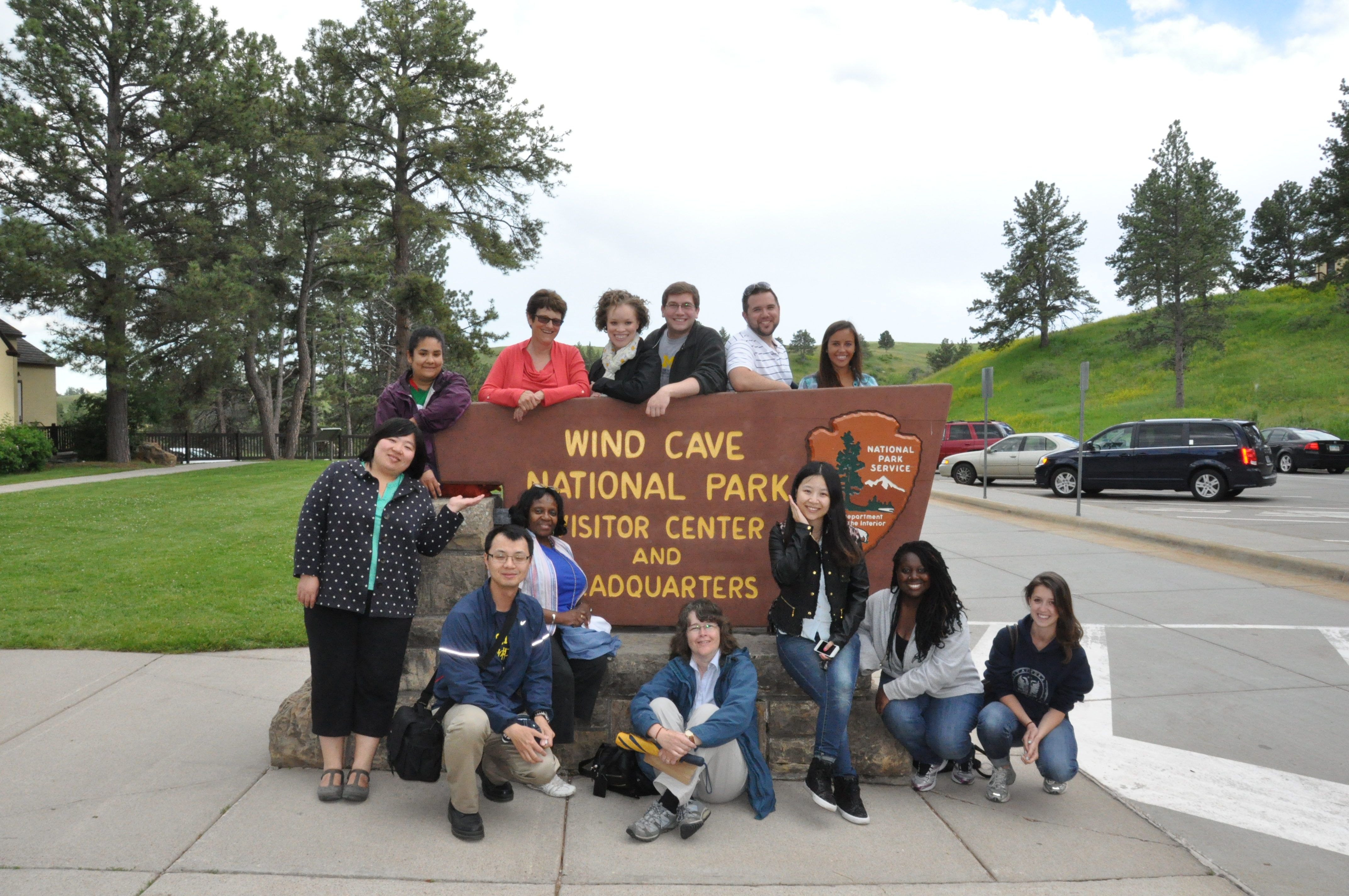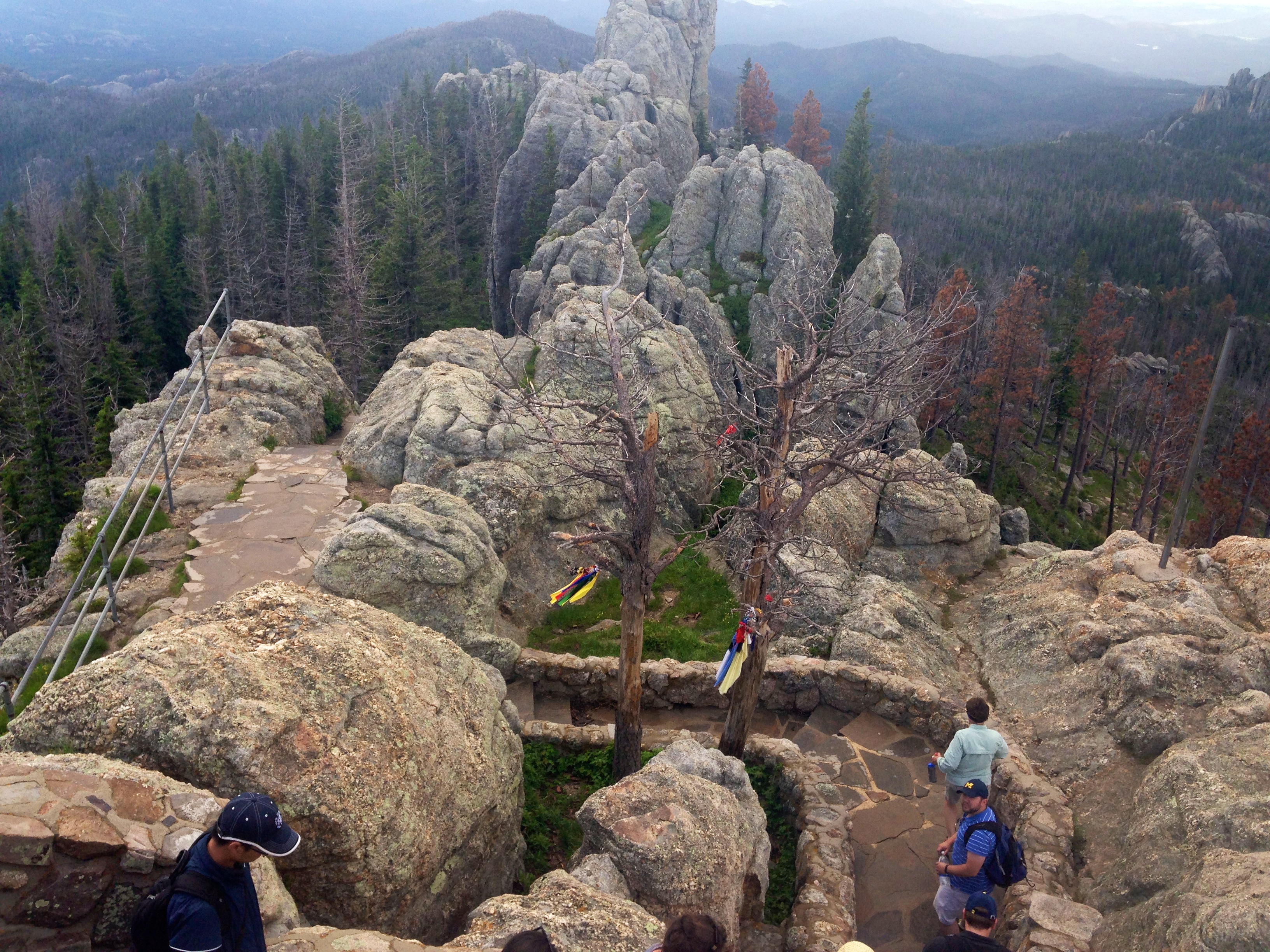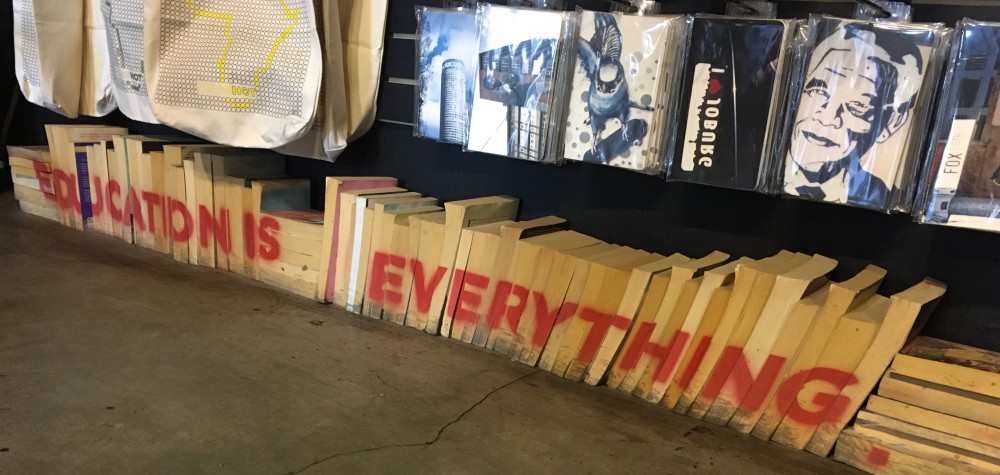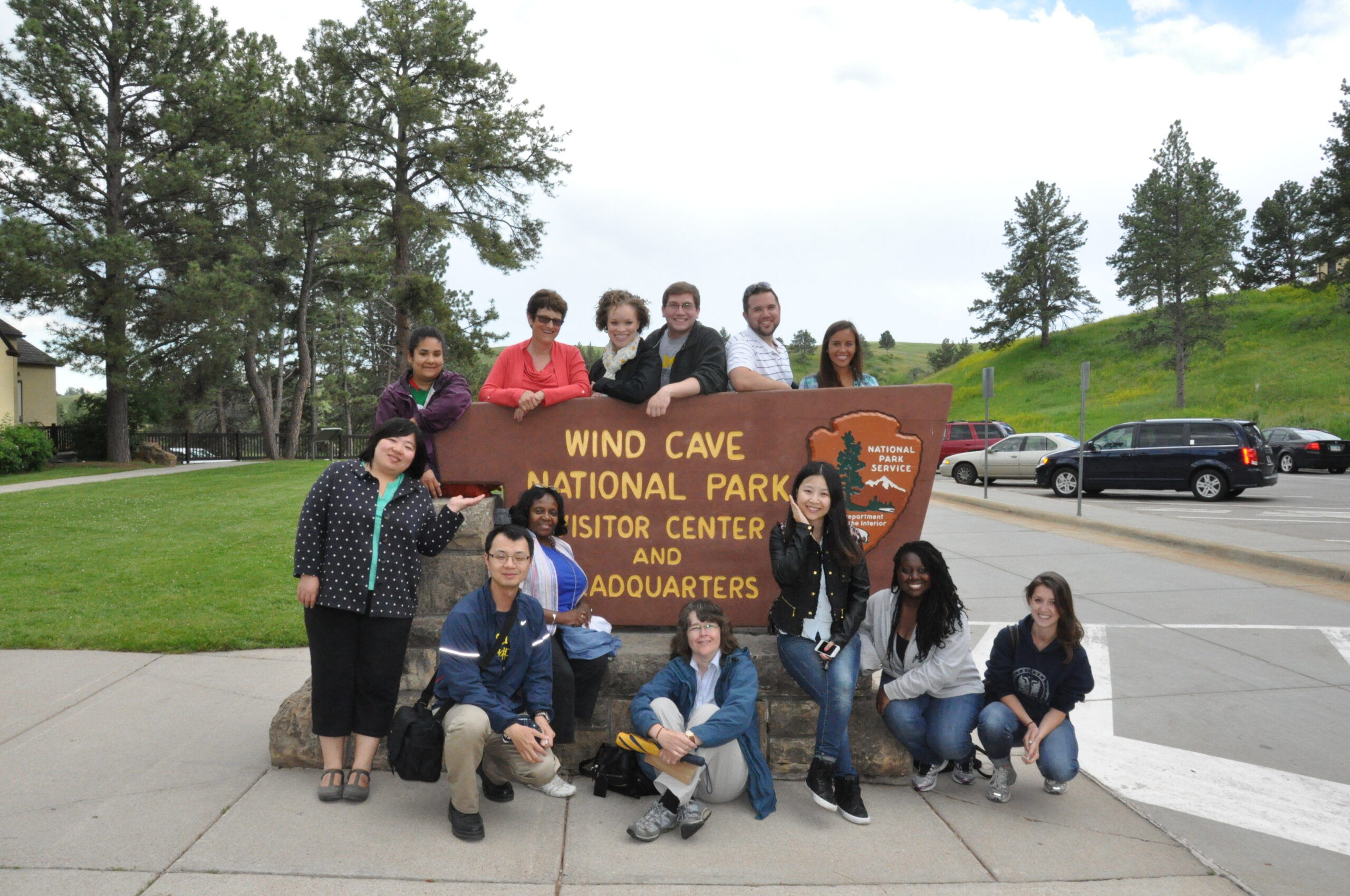Tuesday, June 24
After the emotional high of the past few days at OLC, we spend a day at rest in the Black Hills. Our travels to the Hills are by way of the South Unit of the Badlands, and a visit to Wind Cave National Park. Wind Cave is part of the origin story of the Lakota people. At this point on our journey, we all have our radars alert for how information is conveyed to the public at such culturally sensitive sites as this. We note that there is reference made to the importance of the cave to some Native American tribes. And, on the next informational board this quote from early white explorer Alvin McDonald is included, “Thursday February 19th, 1891. I finally found a place that I could get through, by breaking a while with the hammer, & had ……. on top & bottom of the hole. After breaking through, we came into a room with no regular shape or dimensions that I could see, (probably 30 yards across). From the West end of this room we found a passage leading to the right & I had the pleasure of being the first human being that ever went through it (because I made the first tracks).”

It is our good fortune to meet one evening for dinner with U-M Educational Studies doctoral candidate Adam Hengen in Custer, SD, to discuss his current research project and his experiences working with the tribal review board. Adam is a wealth of information and provides the group with a perspective we have, until now, not had the opportunity to gain—that of a non-Indian, South Dakota native with an affinity for understanding the educational needs of the Indian community.
Our lone “day at rest” during this entire two-week odyssey turns out not to be very restful. A number of us decide to hike to the top of Mt. Harney. At 7,242 feet, the view from the peak is worth the effort of our rigorous six-mile roundtrip hike. Definitely an odd sensation to have helicopters flying below us!


